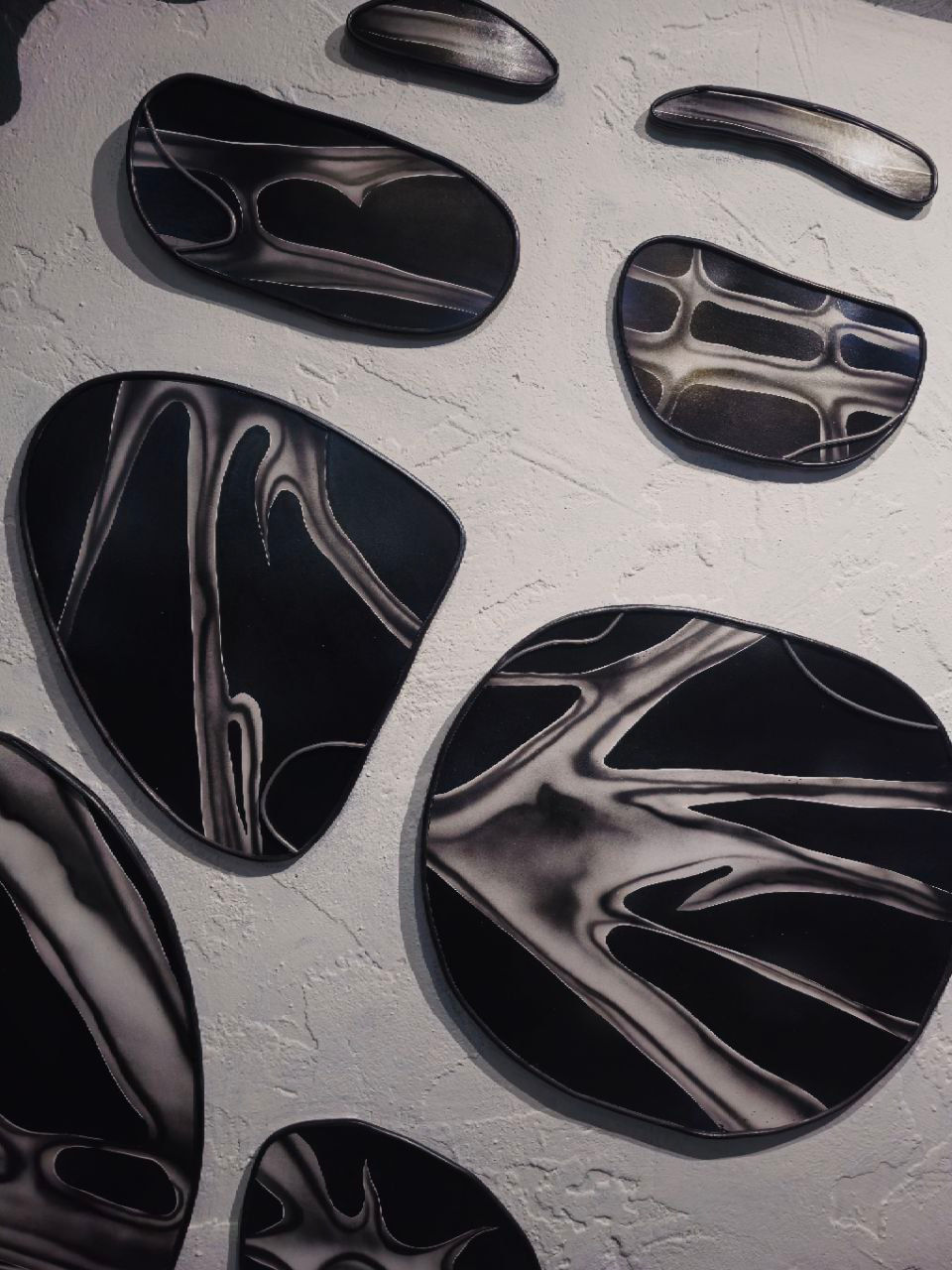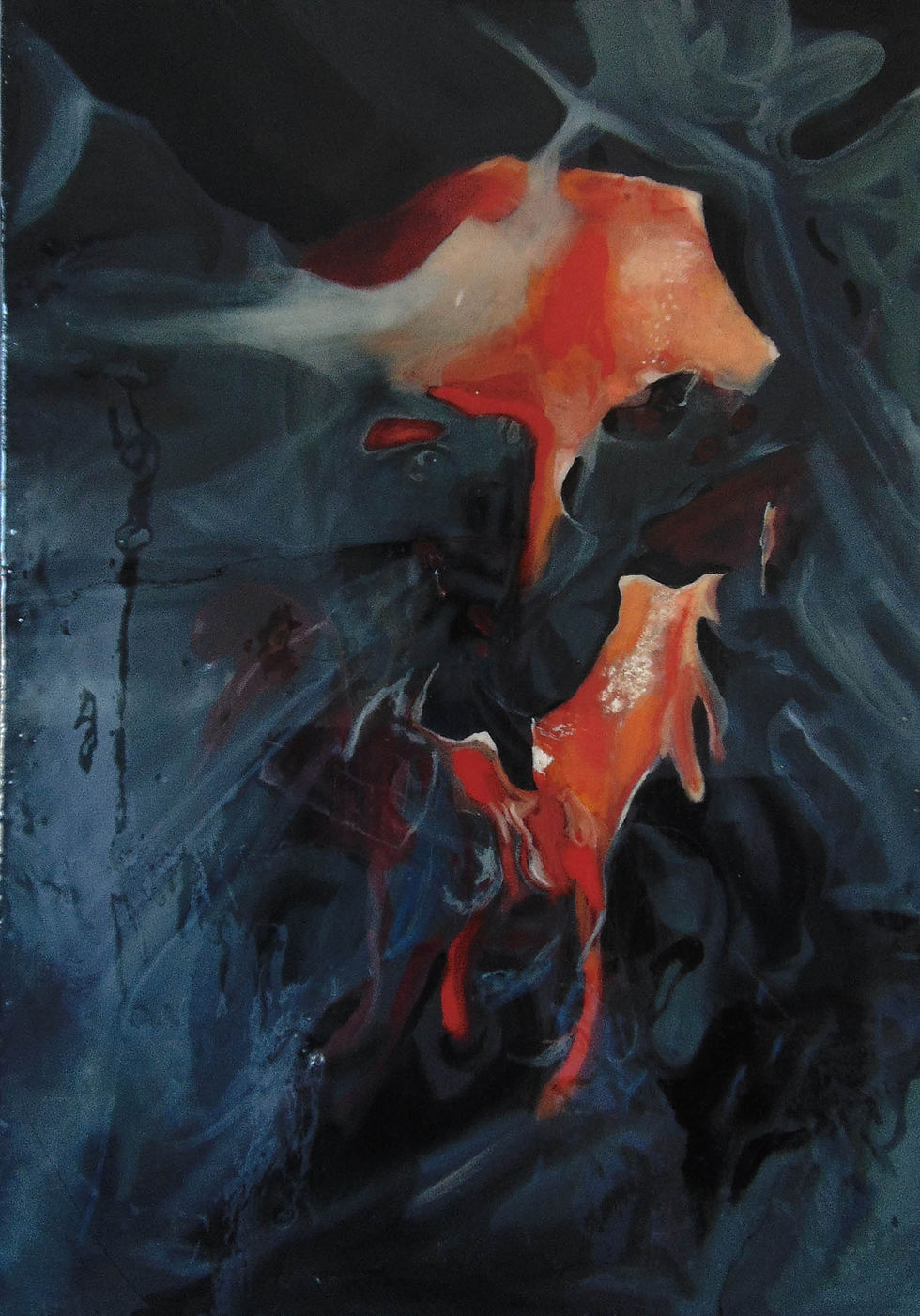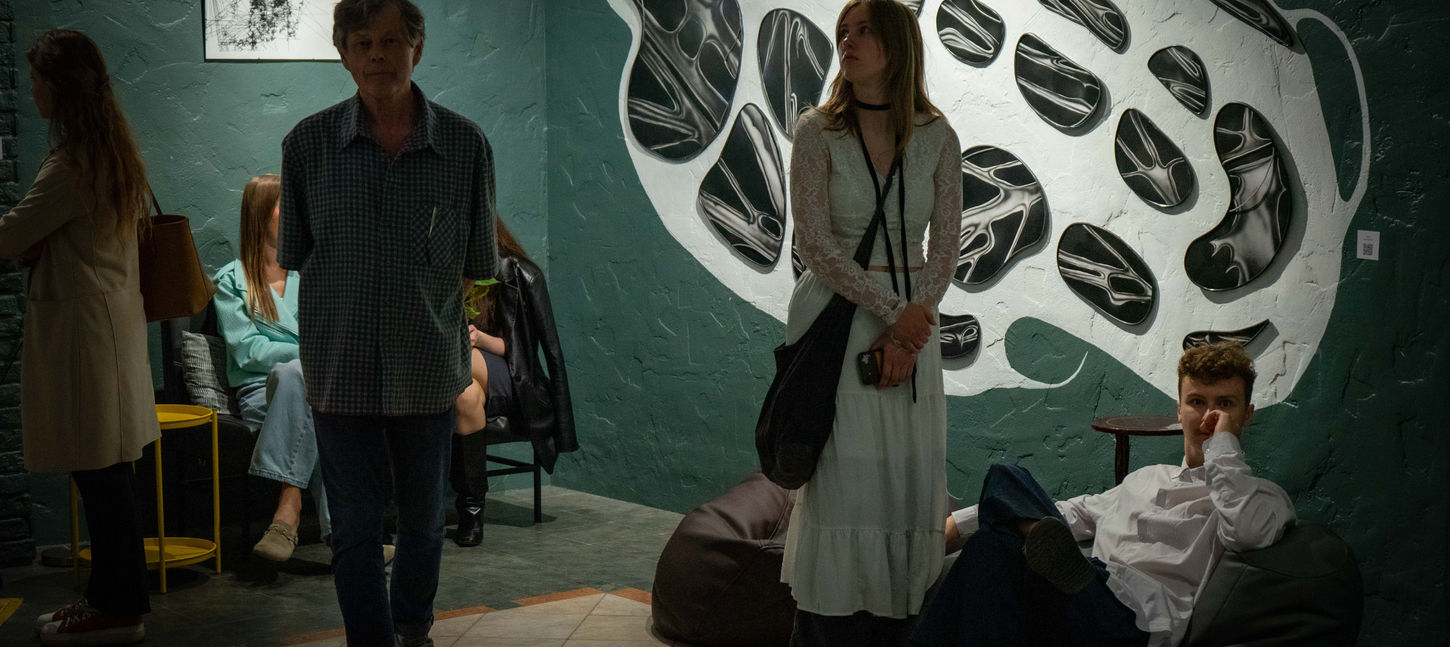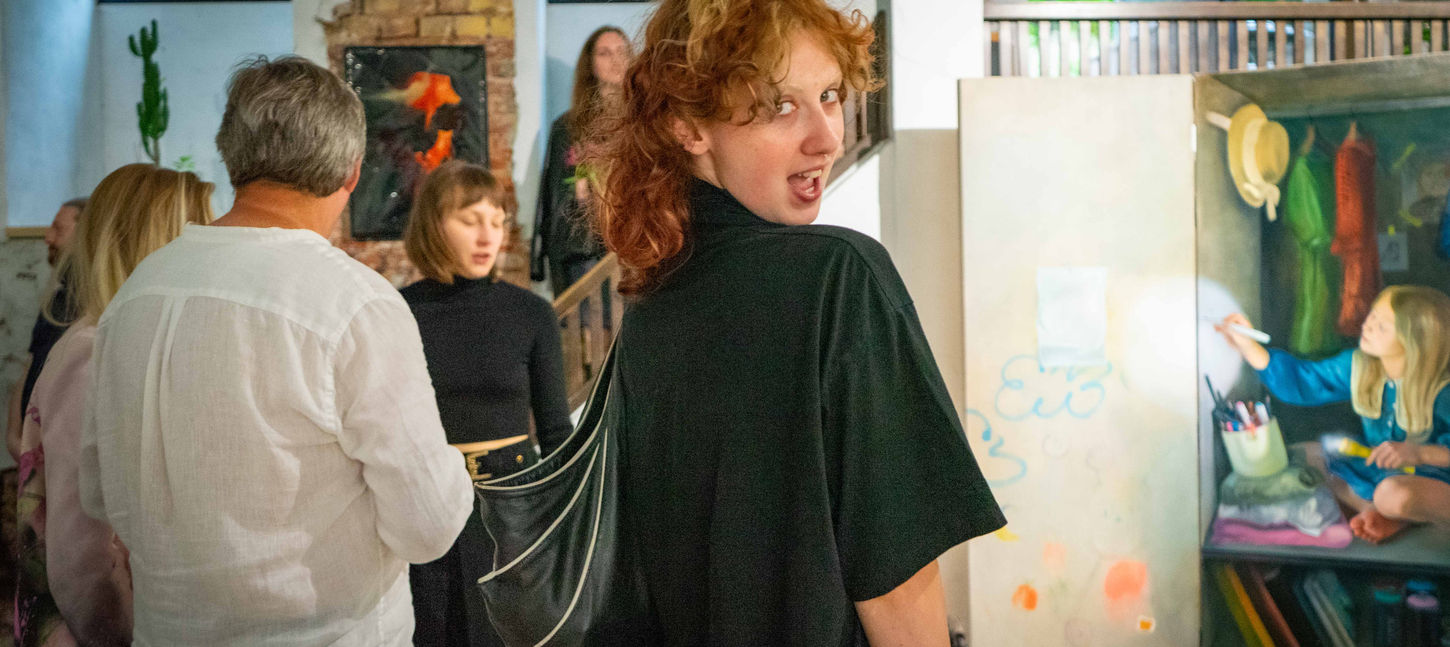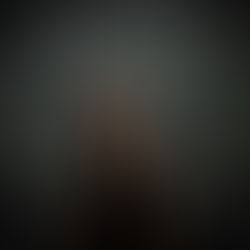
Group Exhibition
"In-Between Identities"
September 11 – December 14 2025
MASA Gallery
The group exhibition brings together thirteen artists from six countries, exploring self-portraiture as a point of tension between subjective experience and how the self is constructed through outward perception. Drawing on psychological and cultural frameworks, the works reflect identity not as a fixed truth but as a layered process, influenced by internal mechanisms, external gazes and even technological mediation.
The outside world responds to the self as it perceives it through a myriad of skewed lenses – cultural dogmas, prejudices and biases, suppositions and circumstances, as they get reflected off the self back into the field of vision of the beholder. The concept of the self is paradoxically both deeply private and unavoidably public. It is as intimate as it is performative. The self-portrait – especially in the digital age – is no longer merely a representation, but a negotiation, an oscillation between what the self is and what it is regarded to be. It becomes a statement of reclamation of space and autonomy, a taking back of control. More than a visual artifact, it is the playing out of a mental state in real time.
Carl Jung’s contribution to this discussion lies in the insistence that much of the self is not consciously accessible to us. What we know of ourselves is shaped largely in contrast to what we repress. This repressed portion of the psyche – what Jung termed the shadow – contains those qualities we deny, abhor, or fear in ourselves: anger, weakness, envy, vulnerability. These do not vanish; they are projected. They find their way back to us not through reflection, but through distortion: in our judgment of others, in our compulsions, and often, in the art we make. When one creates a self-portrait, it is rarely a faithful reproduction of the self as a unified being, but rather a dialogue between fragments – some embraced, others disowned. In this context, the self-portrait functions as both mirror and mask. It is simultaneously a means of expression and a method of exorcism. The archetypes Jung identified – such as, for example, the hero, the sage, the trickster – often surface not because the artist chooses them, but because they are woven into the cultural unconscious within which the artist knowingly or unknowingly operates. Thus, their appearance is symptomatic, not strategic. In that sense, an autoportrait is not a static image but a psychological process. It stages a confrontation between the self we believe ourselves to be and the selves we have buried beneath layers of narrative, expectation, and fear.
To exist today is to exist in between – between projection and perception. The modern self-portrait captures this in-betweenness not through its realism, but through its fractures. Perhaps the most honest self-portrait, then, is the one that does not try to resolve these tensions but instead dwells within them: the image that admits its own constructedness, the narrative that confesses its own incompleteness. In that space of ambiguity lies not a failure of identity, but its most fertile ground. We are not unified beings, and never have been. We are layers. We are echoes. We are interfaces.
Participating artists: Santiago Colombo Migliorero (Argentina), Hounyeh Kim (South Korea/Germany), Nataša Vuković (Czechia), Maxim Zmeyev (France), Laima Andrejeva, Valdis Putniņš, Arta Raituma, Kira Rožkova, Lāsma Bringina, Alise Krokforda, Jūlija Levuškāne, Kosti
Curator: Ksenija Afansajeva
Assistant Curator: Elya Asadullaeva




